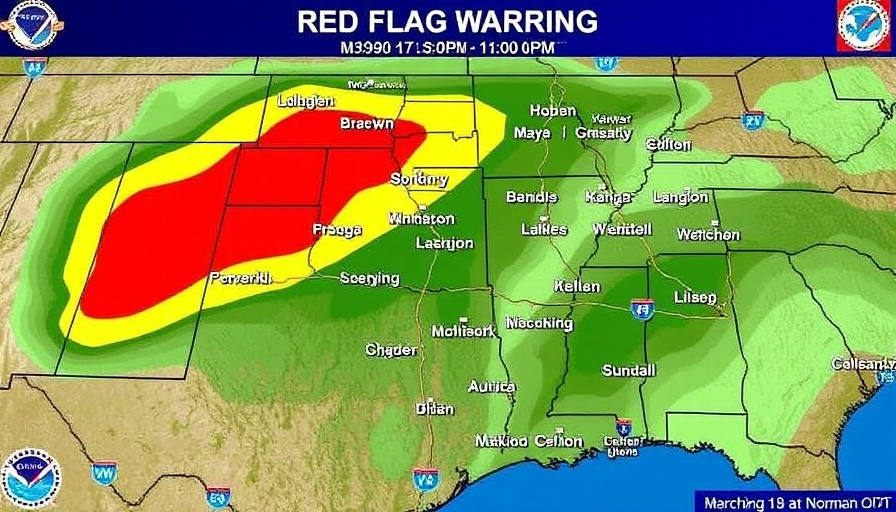
Oklahoma Faces Critical Fire Risks as Red Flag Warning Issued
On March 18, 2025, the National Weather Service (NWS) in Norman, Oklahoma, issued a red flag warning for hazardous fire conditions, effective until March 19 at 1 PM CDT. Areas across western, northern, and central Oklahoma, as well as western North Texas, find themselves under this warning due to dangerously high winds and low humidity.
What Does This All Mean for Oklahoma Residents?
The red flag warning was prompted by winds blowing from the west at speeds ranging from 30 to 45 mph, with gusts reaching as much as 60 mph. Coupled with relative humidity levels dropping as low as 10% and dangerously warm temperatures reaching up to 77°F, these conditions create an extremely high potential for fire spread. Despite recent reports of devastating wildfires that have already claimed four lives and left 200 injured, officials emphasize that awareness and preparation can help mitigate risks.
Understand the Current Conditions and Risks
As Oklahoma grapples with a history of wildfires, the conditions leading to the current warning are alarming. Notably, over 24 counties are included in this alert, reflecting the heightened dangers posed by both the weather and dry vegetation. According to local forecasts, the red flag warning will remain in effect as residents endure the aftermath of recent storms that have exacerbated these risks.
How to Prepare and Protect Yourself
State officials advise residents to take proactive steps to reduce fire hazards. Measures include clearing at least a 10-foot radius around campfires, storing water near open flames, and maintaining vehicles to avoid sparks igniting dry grass. With wildfires primarily being attributed to human error, such preventive actions are crucial. Following the recommendations from fire safety experts can significantly lower the risk of uncontrolled fires spreading.
Stay Informed and Vigilant
For those living in the affected counties, government resources are available to aid in reporting damages and coordinating with local volunteers to assist impacted residents. Keeping updated on the weather alerts and maintaining vigilance can help protect homes and lives during this critical time.
What Happens Next?
Residents can expect fluctuating fire risk levels throughout the week. After the high-risk period, the forecast suggests a drop to ‘critical’ levels from Wednesday to Friday, before easing into a ‘near critical’ status. Awareness around this evolving situation is essential; therefore, monitoring updates from the NWS will be vital to staying safe.
As Oklahoma navigates these challenging conditions, understanding the implications of the red flag warning could be the key to preventing loss and safeguarding communities. By following guidelines and staying informed, residents can contribute to their own safety and the well-being of their neighbors.
 Add Row
Add Row  Add
Add 




Write A Comment